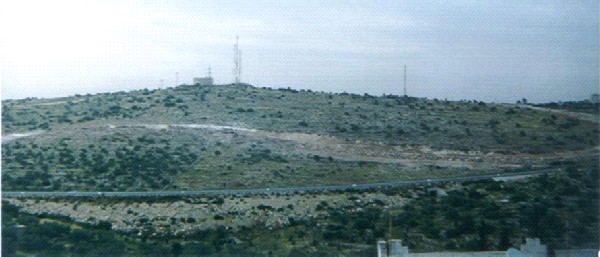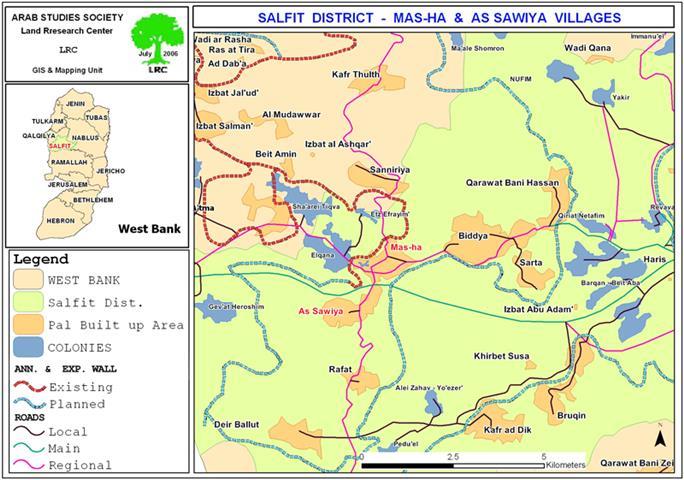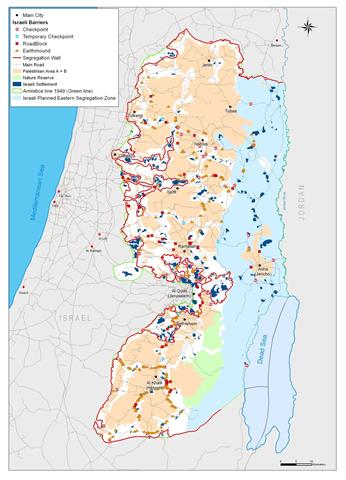The Israeli occupation authorities announced last June tenders to construct 54 housing units for Jewish families in the southern part of Elkana colony at the expense of the western parts of Masha village's land, particularly in the lands separated behind the current path of the Annexation and Expansion Wall. According to Israeli sources, the units will be settled by some of the Jewish families who have left Gaza Strip last summer. It is a only a step forward to bring more and more Israeli settlers into this very strategic area, the Israeli sources added.

(Map 1: Location of Masha & az Zawiya villages and surrounding colonies)
Background on Elkana colony
It was established in the year 1977 at the top of Jabel Al Hilu, basin number 2 of Masha land, overlooking the Palestinian coast. It is located 4 km deep inside the West Bank proper on the ruins of a pre-1967 Jordanian army camp.
The area is rich of underground water storages which cater for the most water needs in the area. In 2004, the colony had the total population of 2983 and a built up area of 758 dunums and municipal area of 1198 dunums (Source- Foundation for Middle East peace).

Insert photo 1: Elkana colony annexed by the Wall)
Photo courtesy of LRC
After its initial establishment the colony continued to expand over adjacent Palestinian land, inlcuidng basins number 2 & 3 of Masha land and Wadi Az Zameer basin of Az Zawiya land. In 1999, it was officially announced the establishment of Elkana B colony over Masha's western confiscated land as an extension of the mother colony (Elkana A).

(Photo 2: leveling the land and preparing the infrastructure for Elkana B)
Photo courtesy of LRC
Regional council
As a continuation of this policy the Israeli occupation authorities founded a joint regional council for the clusters of these colonies which include, in addition to Elkana:
|
Colony name |
Date of est. |
Pop. In 2004 |
Built up area Dunum |
Municipal area Dunum |
land ownership |
|
Sha'are Tikva |
1982 |
3692 |
912 |
1045 |
Azzun Atma& Masha |
|
Etz Efrayim |
1985 |
627 |
184 |
458 |
Azzun Atma, Sinniriya & Beit Amin |
|
Oranit |
1984 |
5458 |
878 |
878 |
Azzun Atma, Masha, Kafr Qasem |
|
Total |
9777 |
1974 |
2381 |
|
|
Source: Foundation for Middle East Peace- Washington
The main aim behind the unification of these colonies is to create a geographical continuity amongst these colonies by seizing thousands of dunums situated in between these colonies as an introduction to actual implementation of the old Israeli dream of annexing this strategic region to Rush Haiyain area inside Israel.
This plan was put in action in the year 2002 as part of the Wall project when Israeli bulldozers began to open roads between these colonies and prepare the infrastructure for permanent and temporary construction in the empty areas for the purpose of expanding the existing neighborhoods and establishing new ones.

(Photo 3: parts of Masha land separated behind the Wall)
Photo courtesy of LRC
Seizure of natural resources
Moreover, available natural resources were confiscated and separated behind the Wall path so as to force Palestinians out of the. For example, Bir Ashela well which was used by the villages of Masha and Azzun Atma was confiscated. Other examples are the wells of Bir Al Waleed, Bir Ash Sharif and Bir Al Moruj which were used by the villages of Beit Amin, Azzun Atma, Masha & Sinniriya. Apart from this, thousands of dunums of fertile agricultural land owned by the aforementioned villages were seized and separated behind the Wall.

( Photo 4: Masha water reservoir separated behind the Wall)
Photo courtesy of LRC
Prepared by
The Land Research Center
LRC














